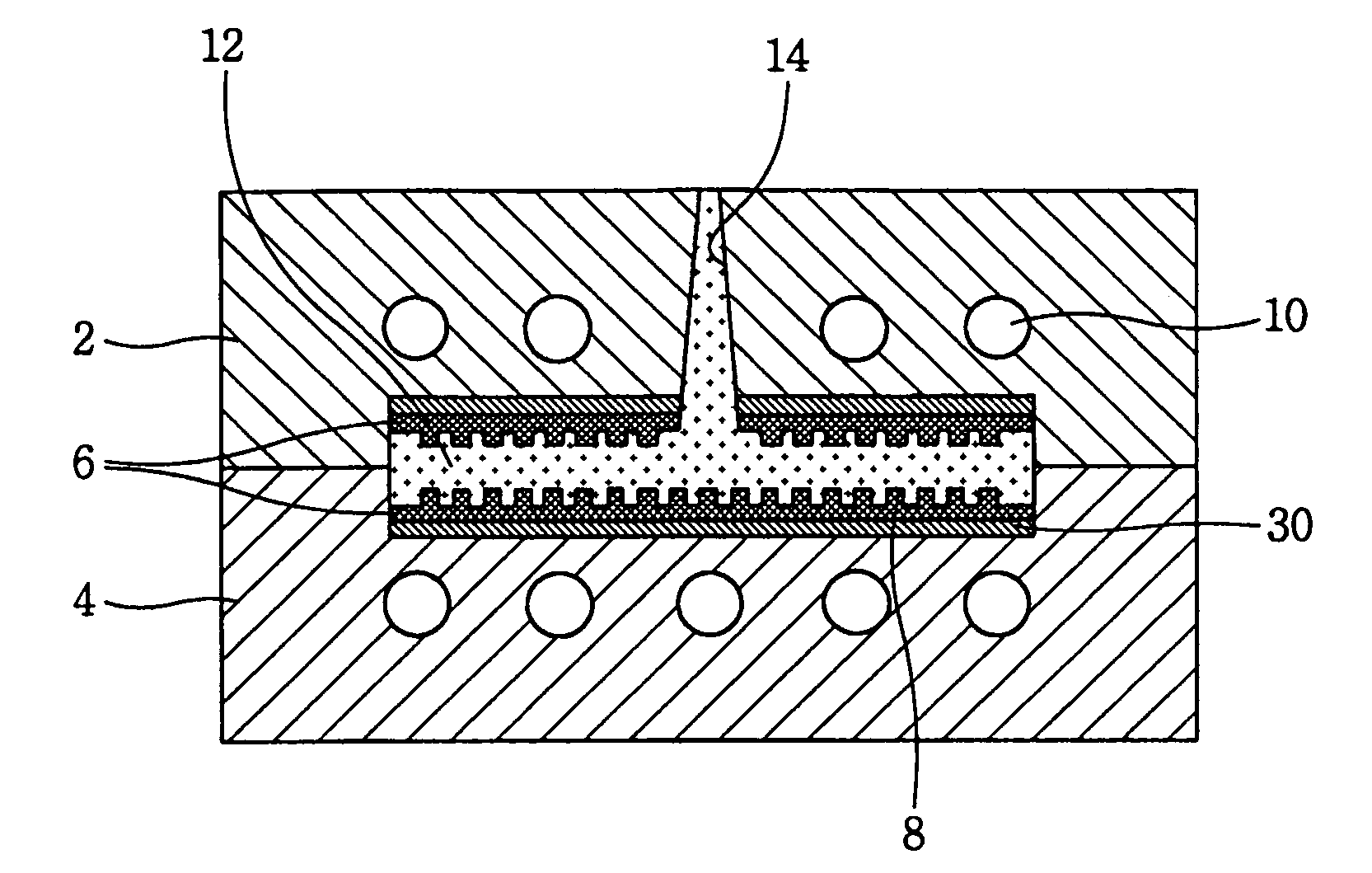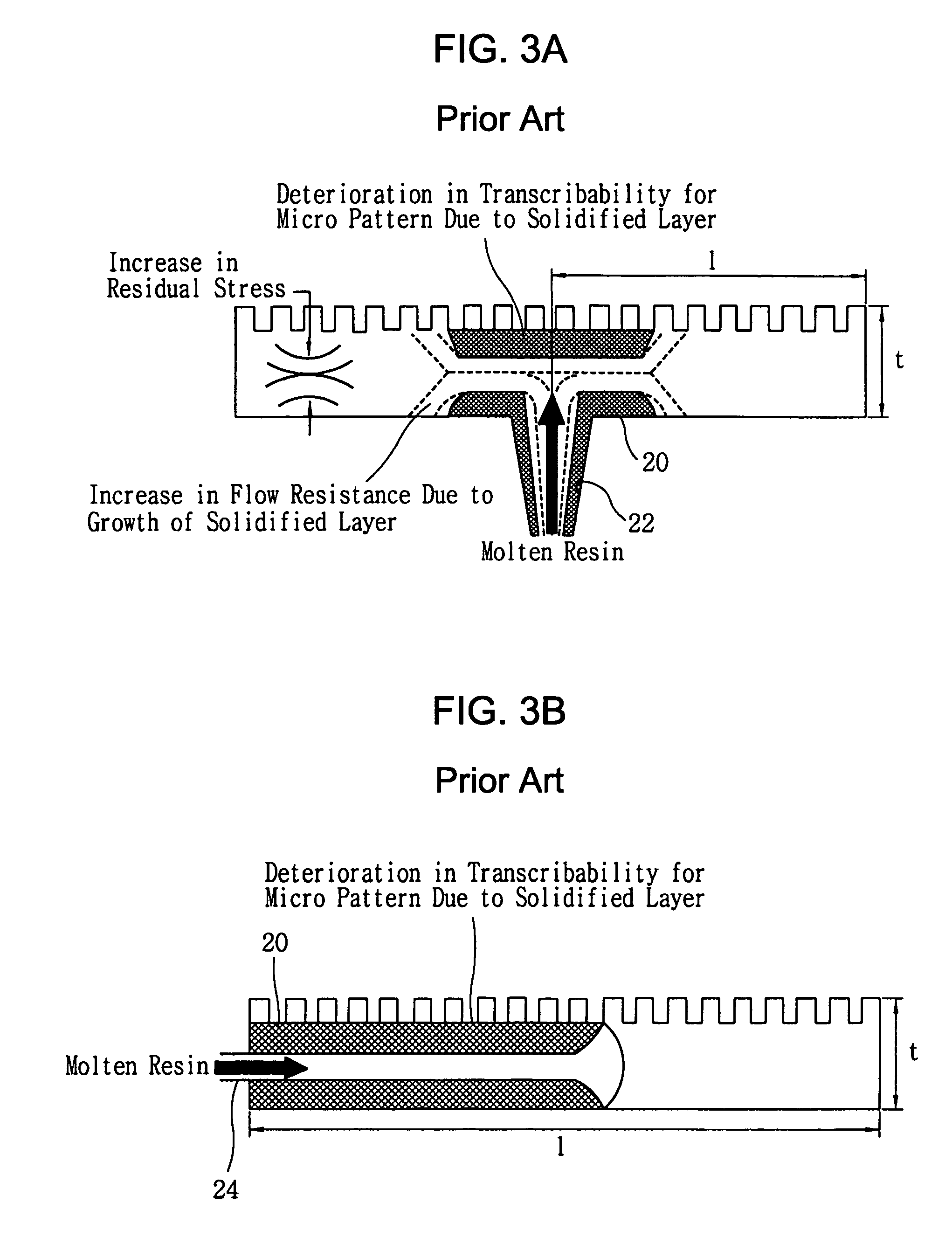Molding system having a micro heating element for molding a micro pattern structure
a technology of heating element and mold, which is applied in the direction of photomechanical equipment, manufacturing tools, instruments, etc., can solve the problems of increasing residual stress, difficult to completely transfer the micro/nano pattern, and difficult to heat and cool the mold, so as to prevent a solidifying layer, quick heat and cooling, and enhance the transcribability of the micro pattern
- Summary
- Abstract
- Description
- Claims
- Application Information
AI Technical Summary
Benefits of technology
Problems solved by technology
Method used
Image
Examples
Embodiment Construction
[0044]A molding system for molding a micro pattern structure having a micro heating element and a method for fabricating a mold insert for molding a micro pattern structure used therein in accordance with the present invention will now be described in detail with reference to the accompanying drawings.
[0045]The present invention is characterized in that it is possible to quickly heat and cool the mold insert 6 with a micro / nano pattern using a micro heater 32 formed in an integrated manner by using a MEMS (MicroElectroMechanical Systems) process, by which it is possible to improve transcribability for the micro / nano pattern and produce a high-performance micro-pattern structure with excellent properties.
[0046]In a molding system according to a preferred embodiment of the present invention, the micro heating element 30 with a MEMS structure which can control a temperature of the mold insert 6 by heating it is formed between the mold insert 6 and a mold. FIG. 5 is a side view of a mol...
PUM
| Property | Measurement | Unit |
|---|---|---|
| thickness | aaaaa | aaaaa |
| diameter | aaaaa | aaaaa |
| temperature | aaaaa | aaaaa |
Abstract
Description
Claims
Application Information
 Login to View More
Login to View More - R&D
- Intellectual Property
- Life Sciences
- Materials
- Tech Scout
- Unparalleled Data Quality
- Higher Quality Content
- 60% Fewer Hallucinations
Browse by: Latest US Patents, China's latest patents, Technical Efficacy Thesaurus, Application Domain, Technology Topic, Popular Technical Reports.
© 2025 PatSnap. All rights reserved.Legal|Privacy policy|Modern Slavery Act Transparency Statement|Sitemap|About US| Contact US: help@patsnap.com



